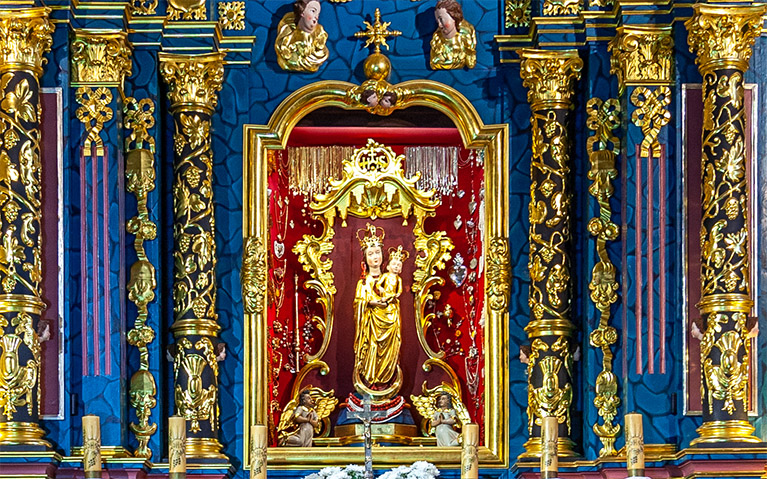The history of the Parish
The parish in Wąwolnica belonged to the diocese of Cracow. According to chronicles, there were three churches in the area. The first St. Adalbert Chapel was built within the walls of the castle. At the turn of the 16th and 17th centuries the Benedictines added a long nave and two side chapels to the main chapel. Documents from 1603 show that it was a parish church at that time. In 1700, a miraculous statue of Our Lady of Kębło was placed in it.
Next to this church, the present church of the same name was built from the western side in the years 1907-1914. After the consecration in 1928, the older church was demolished, leaving its chancel as a former castle chapel with the figure of the Holy Mother of Kębło.
Written documents confirming the existence of the parish are dated from 1325 and 1326. At that time there was a parish church in Wąwolnica and a priest who performed pastoral duties lived there. In the parish chronicle we can read that "the parson of the Wąwolnica church paid for the tithe ordered by Pope Clement V".
The Church of St. Mary Magdalene in the market square, built of white stone, was a parish church until the beginning of the 17th century. Later it was used as a chapel. Originally it stood on the outskirts, but the rapidly growing city took it inside. It survived until 1849 and was mentioned by Jan Długosz in his Polish History.
The third church existed in the place where today there is a brick chapel on the road from Wąwolnica to Kębło. It was a wooden church of the Blessed Virgin Mary. It was supervised by Benedictine monks from the monastery of St. Adalbert on the castle hill.
In 1458 Kazimierz Jagiellończyk gave the royal parish to the monks and thus the Benedictine abbey of the Holy Cross took patronage over the city and the parish. The right of patronage expired in the 19th century after the dissolution of the monastery. Until 1819 the Benedictines served the inhabitants of Wąwolnica and the surrounding villages, shaping the spiritual and material culture. They established a shelter for the elderly (confirmed by a document from 1603). They set up a parish school. In 1603 its rector was Father Marcin Jaworski. In the parish archives there are references to the parish library already from the 16th century.
After the dissolution of the Benedictine Order in 1819, Prince Adam Czartoryski received the right to patronage over the parish.
The present parish church of St. Adalbert was built in the years 1907-1914 from the money of the faithful.
JIt is a three-nave, red brick church in the Neo-Gothic style of the Vistula River. Inside, there are wooden altars in the style adapted to it: Divine Mercy, St. Francis, St. Stanislaus Kostka and St. Joseph.
In the main altar there is a statue of the Madonna from XIII/XIV century, carved in a linden tree, called the Mother of God of Wąwolnica as opposed to the statue of the Mother of God of Kębło. On both sides there are sculptures of Poles of different states, paying homage to the Mother of God.
At the top of the altar there are sculptures depicting the Holy Trinity, and on the walls of the chancel there are paintings of St. Teresa and St. Isidore.








